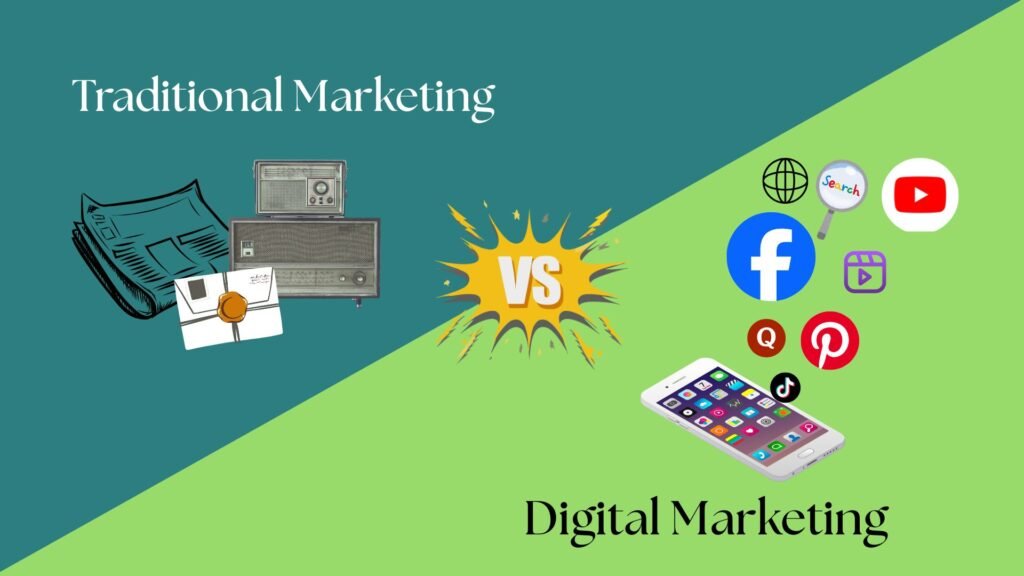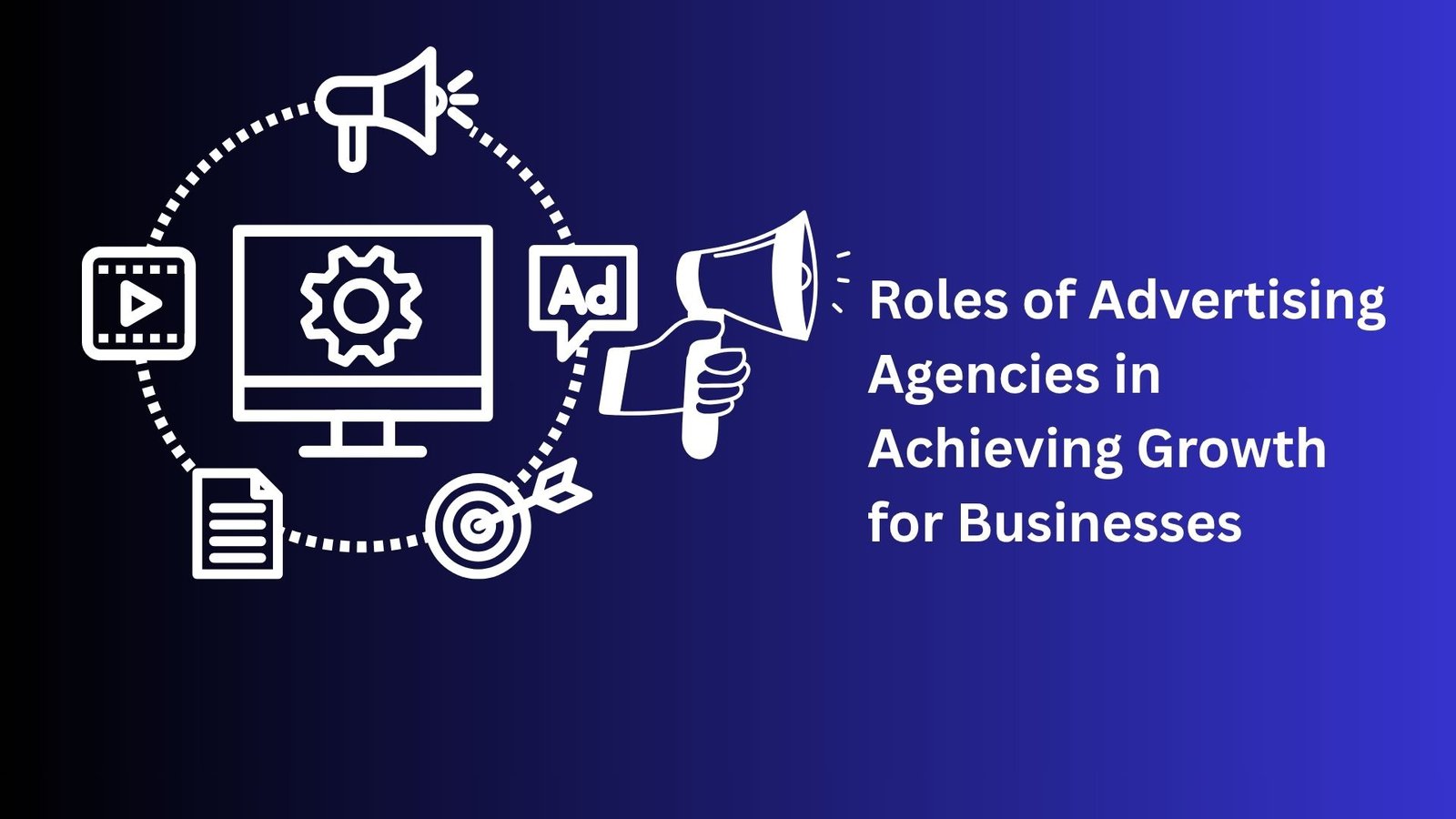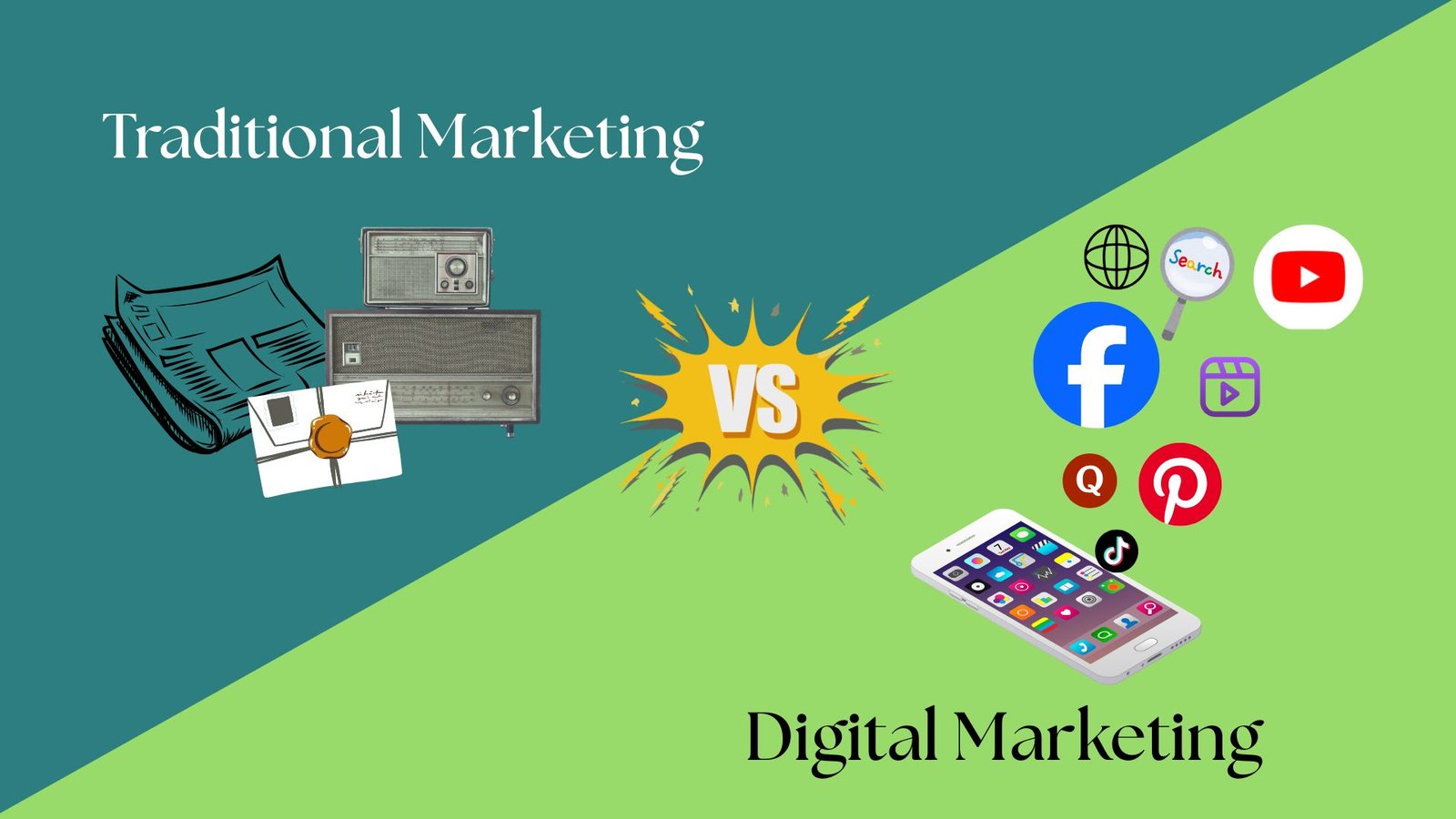Traditional and digital marketing are two of the main marketing methods that are used by businesses to promote their products and services. While traditional methods include outdoor billboards, newspapers, magazines, radio, TV, and posters, digital marketing makes use of modern marketing or digital channels such as emails, social media platforms, and search engines, video sharing platforms like YouTube, affiliate marketing, and influencer marketing to engage target customers.
So, let’s dive right into what exactly are traditional and digital marketing before we discuss the difference between traditional marketing and digital marketing.
What is Digital Marketing?
Also known as online marketing, digital marketing makes use of digital channels and technologies to promote brands, services, and products across the globe. This method encompasses various online activities that include:
- SEO
- PPC
- Content marketing
- Social media marketing
Each of these activities is aimed at engaging customers and driving conversions through data-driven approaches and craft personalised experiences, measure performance, and optimise strategies for favourable results.
Digital marketing includes activities and processes that guide potential customers through their buying journey.
What is Traditional Marketing?
This form of marketing makes use of offline channels to reach target customers, promote products and services, and build brand awareness. Traditional marketing makes use of advertising strategies that have been in practice for decades. Some of the most preferred strategies include:
- Direct mail
- Billboards
- Television
- Radio
- Print ads
Key differences between Traditional Marketing and Digital Marketing
If you are wondering- “How is digital marketing different from traditional marketing?” Traditional and digital marketing vary on the basis of content formats, mediums, average cost of campaign, communication, campaign analysis techniques, and their reach. So, let’s consider the factors that set these two promotional methods apart.
1. Form of Communication
As discussed above, if we are to debate on traditional marketing vs digital marketing, traditional marketing uses age-old methods such as newspapers, billboards, magazines, television, and radio to promote products and services through physical advertisements that audiences get to see while going through their day-to-day routine.
On the other hand, digital advertisements use digital promotion channels such as websites, social media, mobile apps, and search engine optimization to appear in front of potential customers. This approach leverages online tools and data to reach customers on platforms where they are most active.
2. Cost Efficiency
Digital marketing is quite an accessible form of marketing as it allows businesses to start their advertisement campaigns even on a small budget. It allows businesses to quickly scale up or scale down based on the ad’s performance.
Now, traditional marketing strategies such as television ads or newspaper ads usually require a much higher upfront investment, even more so if a business is aiming for prime spots or a larger audience reach. As a result, such a method has fixed costs that cannot be scaled as per the campaign’s performance.
3. Targeting and Personalization
One major difference between online marketing and traditional marketing lies in the ability to target a segment of audience. Businesses that are keen on reaching out to their target demographic tend to benefit from online marketing as it uses a data-driven approach that encompasses demographics, location, interests, and online behaviour. Such level of precision allows for personalised messages that resonate deeply with select audience segments.
As an example, a Facebook ad campaign for running shoes can be targeted toward users who have expressed interest in fitness, belong to a specific location, are within the age group of 25-35, and have recently been searching for a gym membership. The combination of such data enables a brand to deliver personalised ads that feature content that engages this audience, thereby enhancing engagement and conversion rates.
With traditional forms of advertising there is less flexibility when it comes to advertising for a target demographic. The ad campaigns have a wider reach and build awareness among a more general audience base. Moreover, it is quite challenging for businesses to craft customised messages for different audience segments.
For example, a television commercial for the same running shoes is aired during a prime-time show. However, it would be viewed by children, middle-aged, and old people alike. Most of the audience viewing this ad may not be interested in shoes or in fitness. Yes, the commercial will create brand awareness, but the impact the ad will have will be far lesser when compared to one done on a digital platform. As a result, it will be much harder to target the desired demographic and drive conversions.
4. Measurability and Analytics
A key digital marketing and traditional marketing difference lies in measurability. One of the major advantages of digital marketing methods is that they provide detailed analytics. The analytics help track campaign performance in real time and digital marketers are able to measure metrics such as:
- Bounce rates
- Traffic sources
- Clicks·
- Conversions
These help gauge the effectiveness of the strategy and allow digital marketers to make data-driven adjustments as and when needed.
Traditional methods of marketing do not have the scope for such precise measurement. While TV ratings and newspaper circulation give some insight into ad performance, it is not possible to determine the direct impact an ad has had on sales or conversions.
5. Content Format and Creativity
Digital methods of marketing offer publicity through a wide range of formats such as:
- Videos
- Podcasts
- Interactive ads
- Infographics
- Animation
- Augmented Reality
As a result, digital content is quite dynamic in nature giving it an edge over any other form of advertising.
On the other hand, most traditional marketing formats are static like billboards, print ads. Hence, there is very little scope for creativity. Yes, television ads can be dynamic, but even then they are not at par with digital formats in terms of diversity and engagement.
While talking about the difference between traditional and digital marketing it is important to note that traditional ad formats have a fixed shelf life as is the case with a month-long billboard campaign or a 30-second TV spot. After the campaign runs its course, the ad reach quickly diminishes. However, such is not the case with a digital ad as it can be turned on and off at any given point in time. Furthermore, digital content such as social media posts, videos, and blogs continue to draw traffic long after they have been published, changing an investment into a long-term asset.
As a final note, let’s rewind to a 100 years back at the dawn of journalism. Newspaper ads were a major form of advertisement then and will continue to be. However, with the differences listed above, it is plain to see that digital marketing is the new advertisement model for the modern era.





